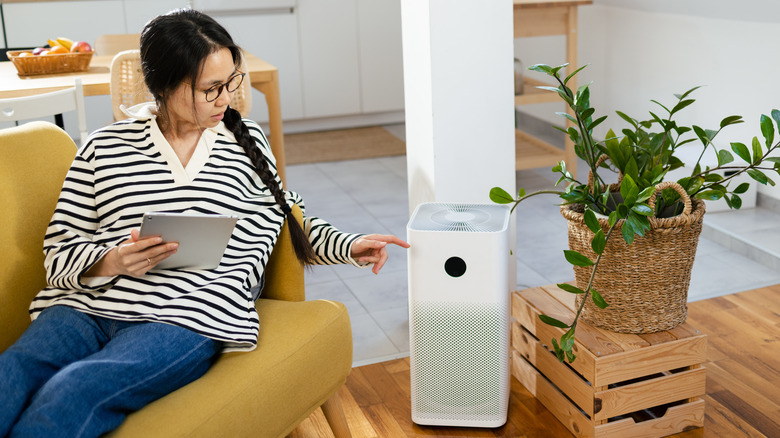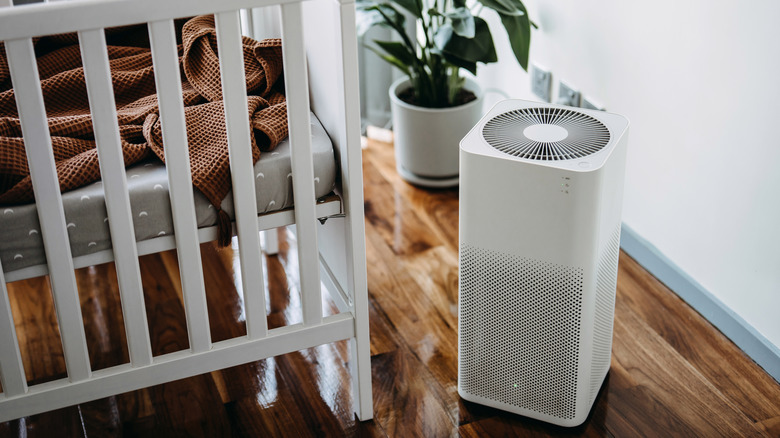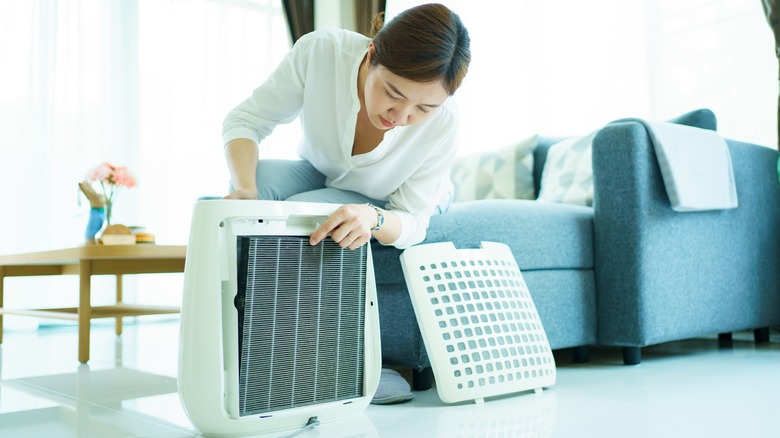How To Choose The Right Air Purifier To Help Get Rid Of Mold Spores
We may receive a commission on purchases made from links.
Chances are, there is mold in your house. The fungus releases spores too small for our eyes to see that float around everywhere, indoors and outdoors. It can enter your home via windows, doors, people, and pets. It sounds scary, especially since mold can lead to various health issues. However, mold only thrives if the spores find an ideal growing environment, like a humid bathroom or leaky pipe. An air purifier can be an effective method in removing mold spores from your home. The only question is: how to choose the right one?
In an exclusive House Digest interview, we spoke to Michael Rubino, a mold and air quality expert and the founder of HomeCleanse, to find out what to look for in a quality air purifier that will remove mold spores. He says the filtration ability and space recommendations are the main features you should consider in order to find a purifier that will minimize air pollutants in your home. "The best air purifiers should have technology that allows them to remove many types of particles and gases," Rubino said.
Consider the air purifier's space recommendation and filtration
First, you want to verify the air purifier's filtration is powerful enough to remove mold spores from your environment. "Air purifiers should at least meet HEPA [high efficiency particulate air] status, meaning they remove 99.97% of particles as small as 0.3 microns," Michael Rubino exclusively told House Digest. "This will ensure particles like spores are removed." It will also filter other top pollutants like VOCs and bacteria. Rubino recommended Intellipure's Air Purifier, as it can filter particles smaller than 0.1 microns.
You also should look for the product's Clean Air Delivery Rate (CADR). This stat measures how much air the device can filter and release in one minute. "The higher the CADR, the more effectively the air cleaner removes particles, making it essential for combating poor indoor air quality," Rubino explained. A good CADR also depends on your room's size. The rate should be at least ⅔ of the room's area, meaning a 150-square foot room needs an air purifier with at least a 100 CADR.
Finally, check the air purifier's space recommendations. It won't be effective in filtering the mold spores from your home if your room is larger than its purifying perimeter. That's why Rubino favors a whole-house system. He explained, "Whole-house air purifiers are the best because they're installed at the home's entry point and help circulate filtered air throughout the entire building, eliminating space requirement issues. They also add a layer of protection for the HVAC system."
How to get the most out of your air purifier
Cleaning your air purifier and changing the filter is an important part of the device's maintenance. Delaying these steps only causes problems. As Michael Rubino exclusively told House Digest, "This will affect their ability to filter, increasing particles like mold spores in the space, and leading to poor indoor air quality. It can also strain the air purifier as it works overtime to pull air through the clogged filters, leading to malfunction." Replacing the filter on time will ensure that the machine works at its best performance, so don't ignore the alert.
Where you position your device also plays a part in how well it works. "Aim to place the air purifier in highly trafficked areas, near sources of pollution, away from clutter and obstructions, and/or in rooms you spend the most time in," Rubino suggested. It should have space all around the device for it to receive optimal airflow. If possible, the best spot to put an air purifier is elevated a few feet from the floor. That way, it gets 360-degree circulation. With the right placement and maintenance, your purifier should blow away the mold spores and air pollutant worries.


